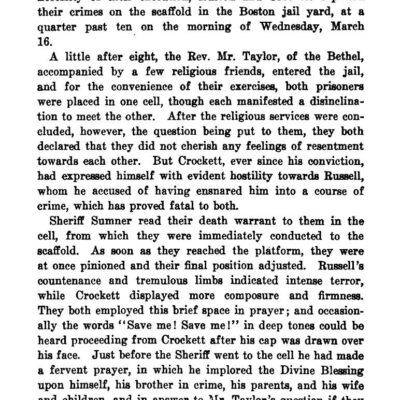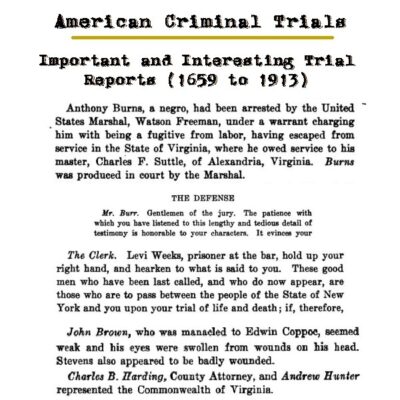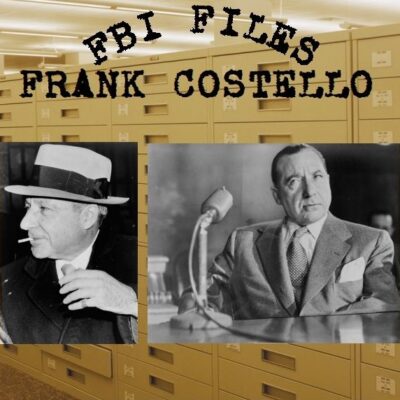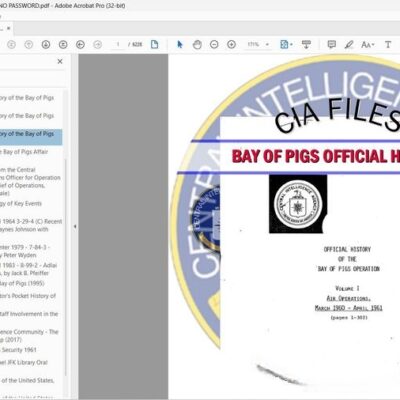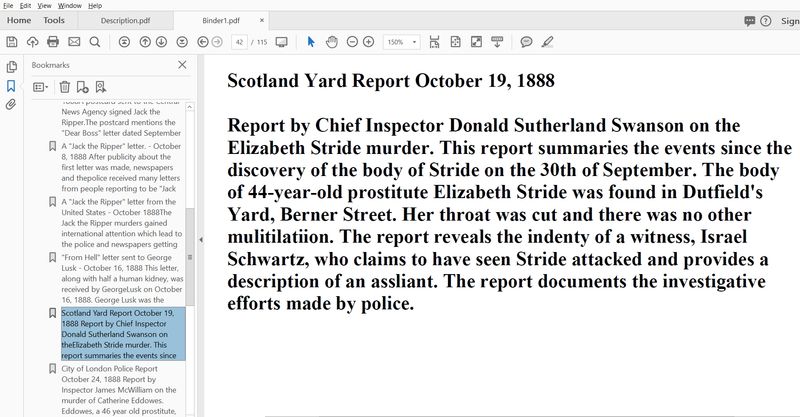
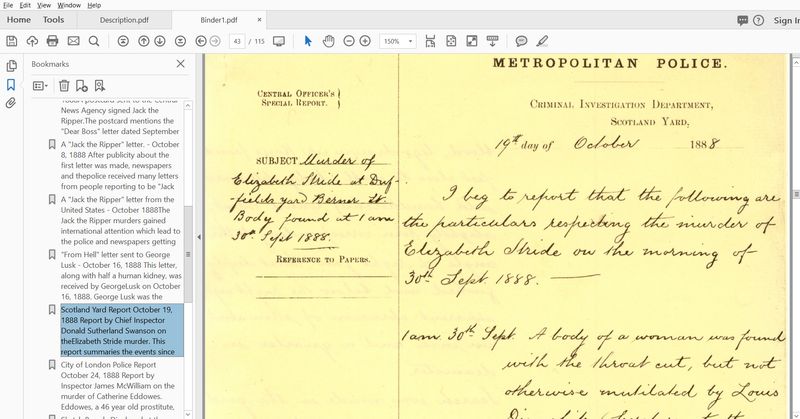
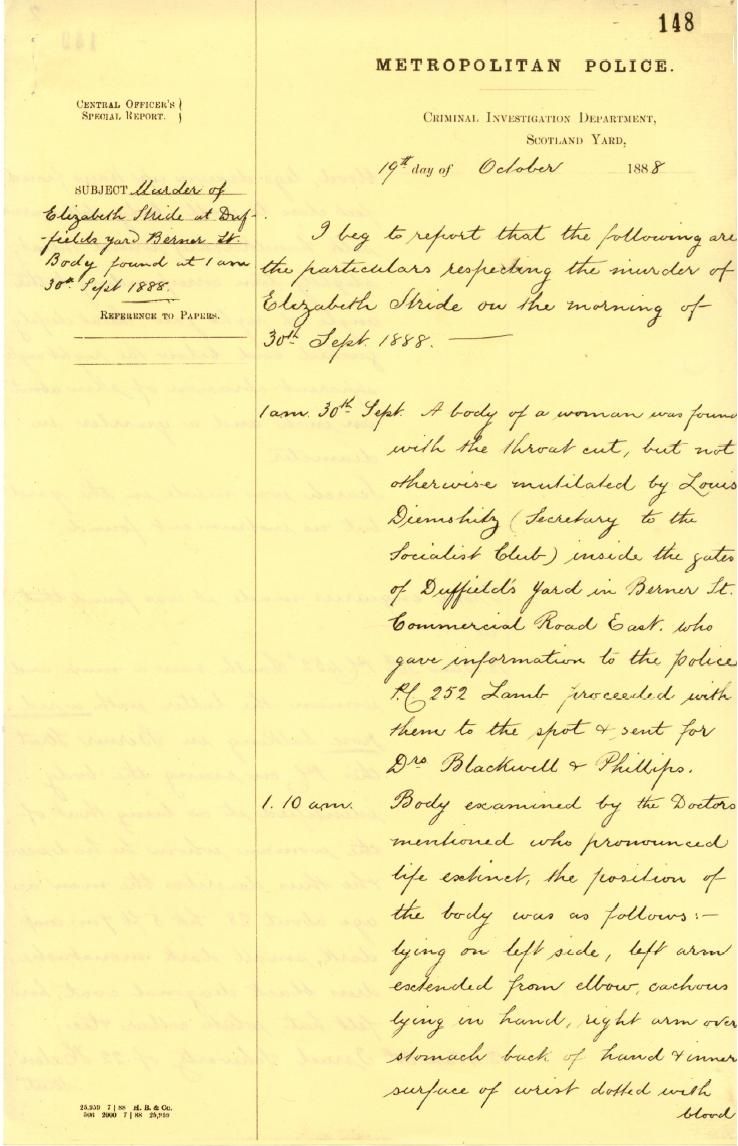
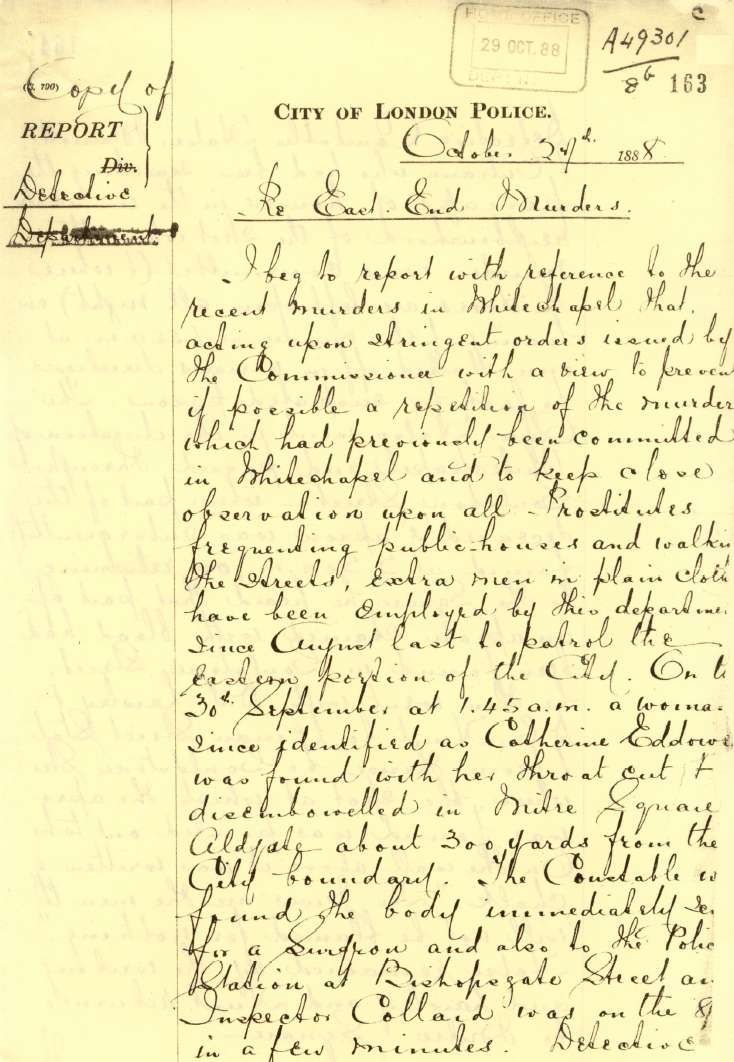
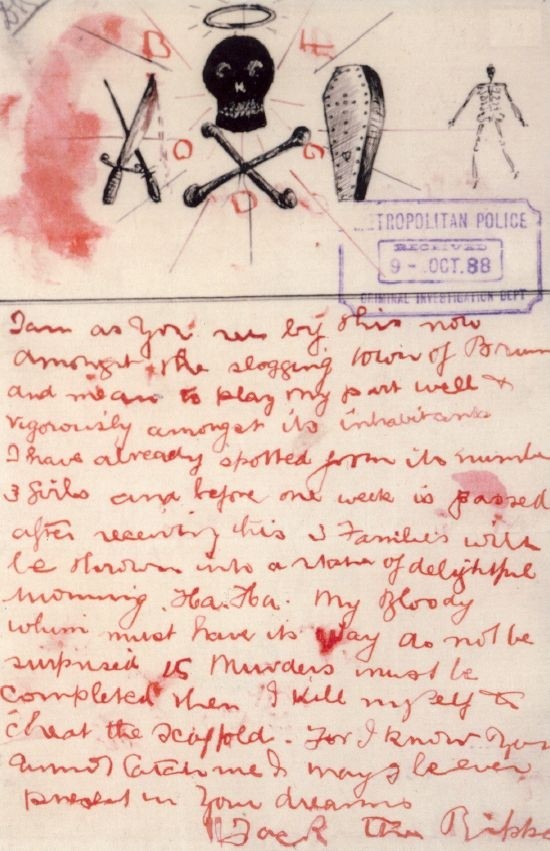
Jack the Ripper – Whitechapel Murders: London Police, Scotland Yard, and FBI Case Files
$19.50
Description
ThisThis collection comprises 96 pages of duplicated documents from the City of London Police, collection comprise the Metropolitan Police (including Scotland Yard), and the FBI, all related to thes 96 pages of duplicated docum Jack the Ripper case and the Whitechapel murders.
Jack the Ripper, the moniker given to an unknown serial killer, terrorized London’s impoverished Whitechapelents from the City of London Police district in 1888. He became the world’s first internationally recognized serial killer, a name derived from a letter sent to a news agency, the Metropolitan Police (including Scotland Yard) in September 1888.
Between 1888 and 1891, eleven prostitutes were murdered in Whitechapel; five are widely attributed to Jack the Ripper. These victims include Mary Ann Nichols, Annie, and the FBI, all related to the Jack the Ripper case and Chapman, Elizabeth Stride, Catherine Eddowes, and Mary Jane Kelly, each murdered at a specific location within Whitechapel and its environs.
All the Ripper killings occurred within a small area of East London and the City. The the Whitechapel murders.
Jack the Ripper, t ensuing manhunt created widespread fear and intense media coverage, both domestically and internationally, with numerous early speculations about the killer’s identity.
The collection contains British law enforcement documents. he moniker given to an unknown serial killer, terrorized London’s impoverished Whitechapel district in 1888. He became the world’s first internationally recognized serial killer, a name derived from a letter sent to a news agency in September 1888.
Between 1888 and 1891, eleven prostitutes were murdered in Whitechapel; five are widely attributed to Jack the Ripper. These victims include Mary Ann Nichols, Annie Chapman, Elizabeth Stride, Catherine Eddowes, and Mary Jane Kelly, each murdered at a specific location within Whitechapel and its environs.
All the Ripper killings occurred within a small area of East London and the City. The ensuing manhunt created widespread fear and intense media coverage, both domestically and internationally, with numerous early speculations about the killer’s identity.
The collection contains British law enforcement documents. BritishBritish police records from late 1888 and early 1894 police records from detail the Whitechapel murders. These files contain reports and investigative details on the late 1888 and early 1894 detail th killings of four victims: Mary Ann Nichols, Annie Chapman, Elizabeth Stride, and Catherine Eddowes. They also include purported communications from Jack the Rippere Whitechapel murders. These files cont and a witness statement from George Hutchinson, considered the most reliable eyewitness account.
The “Dear Boss” letter, received September 27, 18ain reports and investigative details on the killings of fo88, claimed responsibility for the murders and introduced the moniker “Jack the Ripper.” Scotland Yard couldn’t definitively authenticate its origin, suspecting a publicity-seeking journalist. Its chilling threat to mutilate a future victim, followedur victims: Mary Ann Nichols, Annie Chapman, Elizabeth by the partial removal of Eddowes’ ear, fueled speculation about its authorship.
A postcard, received October 1, 1888, and signed “Jack the Ripper,” referenced the “Dear Boss” letter and theStride, and Catherine Eddowes. They also include purpo double murder of Stride and Eddowes. Its prior knowledge of the unpublished “Dear Boss” letter strengthens the belief that it originated from the same source, and it introduced the alias “Saucy Jack.” rted communications from Jack the Ripper and a witness statement from George Hutchinson, considered the most reliable eyewitness account.
The “Dear Boss” letter, received September 27, 1888, claimed responsibility for the murders and introduced the moniker “Jack the Ripper.” Scotland Yard couldn’t definitively authenticate its origin, suspecting a publicity-seeking journalist. Its chilling threat to mutilate a future victim, followed by the partial removal of Eddowes’ ear, fueled speculation about its authorship.
A postcard, received October 1, 1888, and signed “Jack the Ripper,” referenced the “Dear Boss” letter and the double murder of Stride and Eddowes. Its prior knowledge of the unpublished “Dear Boss” letter strengthens the belief that it originated from the same source, and it introduced the alias “Saucy Jack.” AA letter and a human kidney arrived at George Lusk’s home on October letter and a h16, 1888. The kidney was linked to theuman kidney arrived at George Lusk’s hom murder of Catherine Eddowes. Lusk, head of a citizen’s group hunting the killer, received numerous hoax letters due to his high profile.e on October 16, 1888. The kidne Experts widely believe this particular letter is genuine.
Sir Melville Macnaghten’s report significantly shaped public understanding of the Jack the Ripper killings. y was linked to the murder of Catherine Eddowes. LuskThis document remained largely hidden until 1959, with full access only granted in 2002. It identifies five victims and three potential suspects.
The FBI’s 1988 investigation applied modern criminal, head of a citizen’s group hunting the killer, received num profiling techniques to the case. A detailed report examined various aspects, including victim profiles, forensic evidence, crime scene details, communications, and the killer’s behavior. This analysis illuminated the Ripper case and served as a model for futureerous hoax serial killer investigations. letters due to his high profile. Experts widely believe this particular letter is genuine.
Sir Melville Macnaghten’s report significantly shaped public understanding of the Jack the Ripper killings. This document remained largely hidden until 1959, with full access only granted in 2002. It identifies five victims and three potential suspects.
The FBI’s 1988 investigation applied modern criminal profiling techniques to the case. A detailed report examined various aspects, including victim profiles, forensic evidence, crime scene details, communications, and the killer’s behavior. This analysis illuminated the Ripper case and served as a model for future serial killer investigations.
Jack the Ripper: A Chronological History
- 1888, August 31: Mary Ann Nichols is murdered in Buck’s Row, Whitechapel. This is the first of the five murders commonly attributed to Jack the Ripper.
- 1888, September 8: Annie Chapman is murdered in the rear yard at 29 Hanbury Street, Spitalfields.
- 1888, September 25: The “Dear Boss” letter is written, claiming responsibility for the murders and signed “Jack the Ripper.” This is the first use of the name.
- 1888, September 27: The “Dear Boss” letter is received by the Central News Agency.
- 1888, September 30: Elizabeth Stride is murdered in a yard beside 40 Berner Street, St. Georges-in-the-East. Shortly after, Catherine Eddowes is murdered in Mitre Square, Aldgate, City of London. These are referred to as the “double event”.
- 1888, October 1: The “Saucy Jack” postcard is sent to the Central News Agency, referencing the “Dear Boss” letter and the “double event.”
- 1888, October 16: The “From Hell” letter, along with half a human kidney, is received by George Lusk, Chairman of the Whitechapel Vigilance Committee.
- 1888, November 9: Mary Jane Kelly is murdered at 13 Miller’s Court, 26 Dorset Street, Spitalfields. This is considered the last of the five canonical Jack the Ripper murders.
- 1888, August – November: British law enforcement documents are created detailing the investigations of the murders of Mary Ann Nichols, Annie Chapman, Elizabeth Stride, and Catherine Eddowes. These documents include reports and witness statements, including that of George Hutchinson.
- 1894, February: Further British law enforcement documents created (presumably more follow up information or continuing investigation.)
- 1959: The Macnaghten memo, a report by Chief Constable Sir Melville Macnaghten, which names his three prime suspects, becomes public.
- 1988: The FBI creates a seven-page criminal investigative analysis, applying modern techniques to the Jack the Ripper case.
- 2002: The full Macnaghten memo is made available for viewing and reproduction.
Cast of Characters
- Mary Ann Nichols: The first of the five canonical victims of Jack the Ripper. She was murdered on August 31, 1888, in Buck’s Row. She was a prostitute.
- Annie Chapman: The second of the five canonical victims. She was murdered on September 8, 1888, at the rear yard at 29 Hanbury Street, Spitalfields. She was a prostitute.
- Elizabeth Stride: One of the two victims murdered on September 30, 1888, in the yard at side of 40 Berner Street, St Georges-in-the-East. She was a prostitute.
- Catherine Eddowes: The other victim murdered on September 30, 1888, in Mitre Square, Aldgate, City of London. She was a prostitute. Part of her ear was cut off, and one of her kidneys was removed.
- Mary Jane Kelly: The last of the five canonical victims. She was murdered on November 9, 1888, at 13 Miller’s Court, 26 Dorset Street, Spitalfields. She was a prostitute.
- “Jack the Ripper”: The pseudonym given to the unidentified serial killer responsible for the Whitechapel murders. The name comes from the signature on the “Dear Boss” letter.
- George Hutchinson: A witness who is believed to be the person who got the best look at “Jack the Ripper”. His statement is included in the British law enforcement documents.
- George Lusk: Chairman of the Whitechapel Vigilance Committee, a citizen group formed to search for the killer. He received the “From Hell” letter and kidney.
- Sir Melville Macnaghten: Chief Constable who created the Macnaghten memo, which identified three prime suspects in the Jack the Ripper case.
The infamous figure known as Jack the Ripper has left an indelible mark on history, particularly within London’s Whitechapel district. Where were Jack the Ripper’s hunting grounds? This question intrigues many who are fascinated by the unsolved mystery of his gruesome crimes. The Ripper was active in 1888 and chose specific areas that would become notorious for their dark histories. This article will explore those locations, providing insight into the shadowy streets where these heinous acts occurred.
The Whitechapel District: The Heart of the Ripper’s Territory
Overview of Whitechapel
Whitechapel is a historic district located in the East End of London. During the late 19th century, it was characterized by overcrowding, poverty, and crime. The area was populated with many immigrants, largely from Eastern Europe, leading to a vibrant yet tumultuous society.
Key Locations Within Whitechapel
While Jack the Ripper roamed several streets and alleyways, there are key spots often identified as his hunting grounds:
Hanbury Street
One of the earliest victims, Mary Ann Nichols, was discovered near Hanbury Street. The narrow lanes and dimly lit corners provided the perfect cover for the Ripper. This area remains significant in Ripperology, with enthusiasts often retracing the steps of victims.
Buck’s Row (now Durward Street)
This location is pivotal as it was where the body of Mary Ann Nichols was found. Buck’s Row exemplified the cramped conditions of the East End, allowing for quick escapes after committing the gruesome acts.
Mitre Square
The murder of Catherine Eddowes took place here, in a relatively secluded corner of the square. Mitre Square had strategic advantages; its layout allowed for both concealment and a swift escape route, making it a preferred choice for the Ripper.
Commercial Street
Commercial Street served as a major thoroughfare in the Whitechapel area. Its bustling nature contrasted sharply with the grim events happening in its alleys and side streets. It also provided access to vital transport routes, which might have aided the Ripper’s getaway post-crime.
Dorset Street
Often referred to as “the worst street in London,” Dorset Street was home to numerous lodging houses where vulnerable women resided. The horrific murder of Mary Kelly, the last of the Ripper’s canonical five victims, occurred here. The notoriety of the street adds to its significance in the Ripper narrative.
The Importance of Location in Understanding the Crimes
Understanding where were Jack the Ripper’s hunting grounds helps us grasp the socio-economic factors of the time. These locations were not merely random choices; they represented a community rife with desperation and vulnerability. The Ripper preyed on marginalized women, mainly sex workers, whose lives were often overshadowed by societal neglect.
Societal Context
The conditions in Whitechapel during the Victorian era were dire. Many women turned to prostitution out of financial necessity, living under constant threat from violence and exploitation. The Ripper’s choice of victims thus reflects the grim reality of life for many women at the time.
Exploring Modern-Day Whitechapel
Today, Whitechapel has transformed considerably, blending historical intrigue with modern urban life. Visitors can walk through the same streets where Jack the Ripper stalked his victims, often guided by Ripper tours that delve into the chilling history of this infamous figure.
Ripper Tours and Historic Walks
For those interested in exploring the geographic context of the murders:
- Jack the Ripper Walking Tours: Various companies provide guided walks through Whitechapel, focusing on the historical locations of the Ripper’s crimes.
- Museums and Exhibits: Some museums in London also feature exhibits dedicated to the Ripper case, providing further insights into the history and impact of these events.
Conclusion
The question of where were Jack the Ripper’s hunting grounds leads us into the dark alleys of Whitechapel, revealing not only the specific sites associated with the murders but also the broader social conditions that enabled such atrocities. Each location holds a piece of history, echoing the struggles of the women who once walked those streets. As we continue to explore Jack the Ripper’s legacy, understanding the significance of these hunting grounds offers valuable lessons about society, vulnerability, and the importance of safety for all individuals in urban settings.
